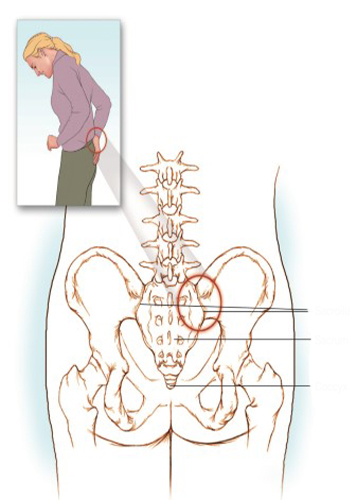
Sacroiliac Joint Pain
Sacroiliac Joint Pain
Clinical Syndrome
The sacroiliac joint is susceptible to the development of arthritis caused by various conditions that can damage the articular cartilage. Pain arising from the sacroiliac joint is usually felt on physical examination in the joint, supporting ligaments and it occurs when the applied to soft tissues is removed. Osteoarthritis is the most common form of arthritis that causes sacroiliac joint pain, and rheumatoid arthritis and posttraumatic arthritis are also common causes of sacroiliac joint pain. Rarer causes include ankylosing spondylitis, infection, and collagen vascular diseases such as Lyme disease. Collagen vascular disease is often referred to as polyarthropathy instead of monarthropathy limited to the sacroiliac joint it occurs, but sacroiliac pain secondary to ankylosing spondylitis responds extremely well to the intraarticular injection technique, which will be described later. Sometimes patients suffer from too much collection of bone graft for spinal fusion it refers to iatrogenically induced sacroiliac joint dysfunction caused by iatrogenic iatrogenic iatrogenic iatrogenic iatrogenic iatroiliac joint dysfunction. Most of the patients presenting with sacroiliac joint pain secondary to stretching or arthritis, localized around the sacroiliac joint and located on the buttocks, he complains of pain radiating to the backs of the legs and back; the pain does not radiate below the knees. Activity exacerbates the pain, relaxation is provided by rest. On physical examination, the affected sacroiliac joint is palpated it is sensitive. The patient usually prefers the affected leg and staggers to the unaffected side. Spasm of the lumbar novemberaspinal musculature is often present. In a sitting position due to relaxation of the hamstring muscles november the range of motion increases.
Treatment
The initial treatment of pain and functional loss of sacroiliac joint pain includes a combination of nonsteroidal anti-inflammatory drugs or cyclooxygenase-2 inhibitors and physical therapy. Treatment of hot and cold locally its implementation may also be useful. For patients who do not respond to these methods of treatment, injection of local anesthetics and steroids is a reasonable next step. Radiofrequency in cases with a short-term response to injection treatments methods can be applied.
